編輯:關於Android編程
使用實現了單選功能的ListView,不要問為什麼不使用RecyclerView,RecyclerView真的做得不如ListView和GridView完善全面,但是RecyclerView真的是很靈活(目前發現RecyclerView有幾個bug,以後再吐槽),RecyclerView也有自己的優勢,這裡解釋一下我們為啥使用了ListView,ListView加上Fragment,點擊ListView的item來切換Fragment,Fragment是可以保存狀態的,使用了hide和show事務,可以根據下發的數據來創建對面的Fragment,就是創建對應的Fragment類型。下面先看看圖片吧:
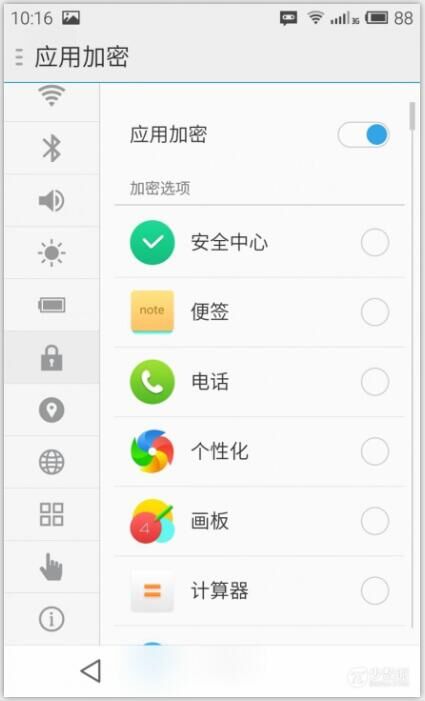
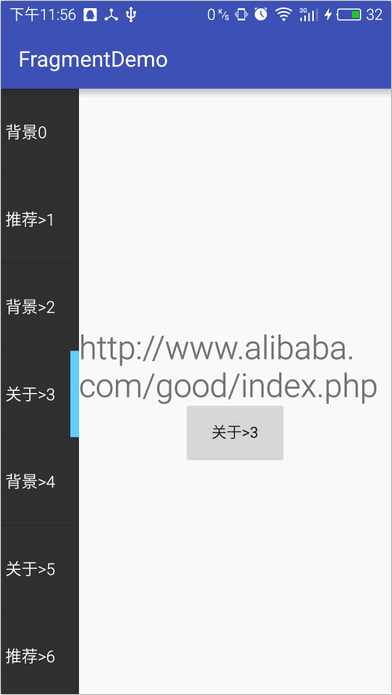
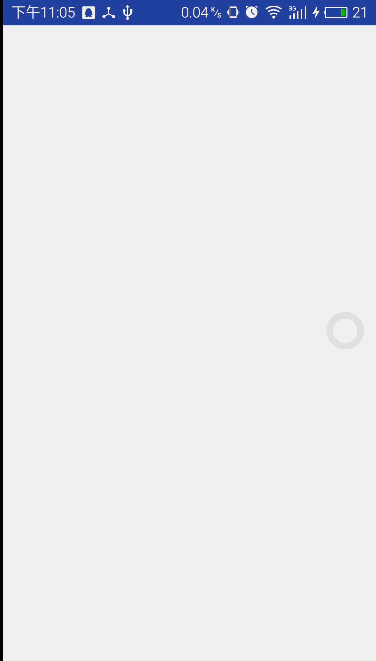
ListView可以支持對選和單選:
tabList.setChoiceMode(ListView.CHOICE_MODE_SINGLE);//單選
tabList.setChoiceMode(ListView.CHOICE_MODE_MULTIPLE);//多選
看代碼之前先看一下工程結構:
java代碼:
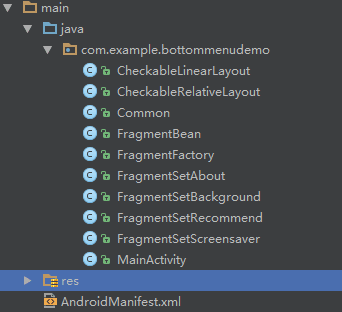
xml文件:
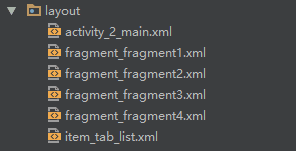
要實現單選那麼ListView的item的布局ViewGroup需要實現Checkable接口,下面是item_tab_list.xml
需要把CheckedTextView這個選中flag以外的控件設置為android:clickable=”false”
下面是自定義的RelativeLayout,主要是實現了Checkable接口:
package com.example.bottommenudemo;
import android.content.Context;
import android.util.AttributeSet;
import android.widget.Checkable;
import android.widget.RelativeLayout;
/**
* Created by Danxx on 2016/4/29.
*/
public class CheckableRelativeLayout extends RelativeLayout implements Checkable{
private static final int CHECKABLE_CHILD_INDEX = 1;
private Checkable child;
public CheckableRelativeLayout(Context context, AttributeSet attrs) {
super(context, attrs);
}
@Override
protected void onFinishInflate() {
super.onFinishInflate();
child = (Checkable) getChildAt(CHECKABLE_CHILD_INDEX);
}
@Override
public boolean isChecked() {
return child.isChecked();
}
@Override
public void setChecked(boolean checked) {
child.setChecked(checked);
}
@Override
public void toggle() {
child.toggle();
}
}
ListView的choiceMode可以在代碼中設置,也可以在xml文件中設置:
tabList.setChoiceMode(ListView.CHOICE_MODE_SINGLE);//單選(代碼實現)
android:choiceMode="singleChoice" //單選(xml中實現)
其余的ListView使用跟一般的ListView使用是一樣的,這個時候我單擊ListView的item就可以實現單選功能了。
Fragment的創建我封裝了一下下,FragmentFactory.java就是用來創建對應的Fragment,需要傳入FragmentBean和與ListView對應的position:
package com.example.bottommenudemo;
import android.os.Bundle;
import android.support.v4.app.Fragment;
import java.util.HashMap;
/**
* fragment build factory
* Created by Danxx on 2016/4/28.
*/
public class FragmentFactory {
/**fragment緩存**/
private static HashMap fragments = new HashMap();
public static Fragment buildFragment(FragmentBean data ,int pos){
Fragment fragment = null;
String id = data.getID();
String name = data.getName();
int position = data.getPosition();
String url = data.getUrl();
fragment = fragments.get(String.valueOf(pos));
if(fragment != null){
return fragment;
}
if(id.equalsIgnoreCase(Common.BACKGROUND)){
fragment = new FragmentSetBackground();
}else if(id.equalsIgnoreCase(Common.RECOMMEND)){
fragment = new FragmentSetRecommend();
}else if(id.equalsIgnoreCase(Common.SCREENSAVER)){
fragment = new FragmentSetScreensaver();
}else if(id.equalsIgnoreCase(Common.ABOUT)){
fragment = new FragmentSetAbout();
}
Bundle bundle = new Bundle();
bundle.putString("id" ,id);
bundle.putString("name" ,name);
bundle.putInt("position", position);
bundle.putString("url" , url);
if(fragment != null){
//傳遞簡單的參數
fragments.put(String.valueOf(pos), fragment);
fragment.setArguments(bundle);
}
return fragment;
}
}
直接看MainActivity的代碼:
package com.example.bottommenudemo;
import android.content.Context;
import android.os.Bundle;
import android.support.v4.app.Fragment;
import android.support.v4.app.FragmentTransaction;
import android.support.v7.app.AppCompatActivity;
import android.util.Log;
import android.view.LayoutInflater;
import android.view.View;
import android.view.ViewGroup;
import android.widget.AdapterView;
import android.widget.BaseAdapter;
import android.widget.ListView;
import android.widget.TextView;
import java.util.ArrayList;
import java.util.List;
public class MainActivity extends AppCompatActivity {
private ListView tabList;
private List fragmentData = new ArrayList();
private MyAdapater mAdapter;
private int lastPosition = -1;
@Override
protected void onCreate(Bundle savedInstanceState) {
super.onCreate(savedInstanceState);
setContentView(R.layout.activity_2_main);
Log.d("danxx", "onCreate--->");
tabList = (ListView) findViewById(R.id.tabList);
/************************填充假數據,可以根據服務器下發的數據來初始化數據(一定得給出模板類型layout_code)*************************/
FragmentBean backGround = new FragmentBean(Common.BACKGROUND,0,"背景0","http://www.dusa.com/da/index.jsp");
fragmentData.add(backGround);
FragmentBean recommend = new FragmentBean(Common.RECOMMEND,1,"推薦>1","http://www.dusa.com/food/list.jsp");
fragmentData.add(recommend);
FragmentBean screensaver = new FragmentBean(Common.SCREENSAVER,2,"背景>2" ,"http://www.meitu.com/pic/con.jsp");
fragmentData.add(screensaver);
FragmentBean about = new FragmentBean(Common.ABOUT,3,"關於>3","http://www.alibaba.com/good/index.php");
fragmentData.add(about);
FragmentBean backGround2 = new FragmentBean(Common.BACKGROUND,4,"背景>4","http://www.dusa.com/da/index.jsp");
fragmentData.add(backGround2);
FragmentBean about2 = new FragmentBean(Common.ABOUT,5,"關於>5","http://www.alibaba.com/good/index.php");
fragmentData.add(about2);
FragmentBean recommend2 = new FragmentBean(Common.RECOMMEND,6,"推薦>6","http://www.dusa.com/food/list.jsp");
fragmentData.add(recommend2);
FragmentBean screensaver2 = new FragmentBean(Common.SCREENSAVER,7,"背景>7" ,"http://www.meitu.com/pic/con.jsp");
fragmentData.add(screensaver2);
FragmentBean about3 = new FragmentBean(Common.ABOUT,8,"關於>8","http://www.alibaba.com/good/index.php");
fragmentData.add(about3);
mAdapter = new MyAdapater(this , fragmentData);
tabList.setAdapter(mAdapter);
tabList.setChoiceMode(ListView.CHOICE_MODE_SINGLE);
mAdapter.notifyDataSetChanged();
/**根據用戶點擊來切換fragment**/
tabList.setOnItemClickListener(new AdapterView.OnItemClickListener() {
@Override
public void onItemClick(AdapterView parent, View view, int position, long id) {
Log.d("danxx" ,"position-->"+position);
if(lastPosition == position){
return;
}
if(lastPosition != -1){
Fragment fromFragment = getSupportFragmentManager().findFragmentByTag(String.valueOf(lastPosition));
if(fromFragment==null){
fromFragment = buildFragment(lastPosition);
}
Fragment toFragment = getSupportFragmentManager().findFragmentByTag(String.valueOf(position));
if(toFragment == null){
toFragment = buildFragment(position);
}
switchContent(fromFragment ,lastPosition ,toFragment ,position);
}else{
/*第一次顯示fragment*/
getSupportFragmentManager().beginTransaction().
add(R.id.content ,FragmentFactory.buildFragment(mAdapter.getItemData(position) ,position) ,String.valueOf(position)).commit();
}
lastPosition = position;
}
});
}
public Fragment buildFragment(int position){
/**根據模板類型layout_code的不同來創建對應的fragment**/
return FragmentFactory.buildFragment(mAdapter.getItemData(position) ,position);
}
/**
* 切換顯示的fragment
* @param fromFragment
* @param fromPos
* @param toFragment
* @param toPos
*/
public void switchContent(Fragment fromFragment ,int fromPos, Fragment toFragment ,int toPos) {
FragmentTransaction transaction = getSupportFragmentManager().beginTransaction();
if (!toFragment.isAdded()) { // 先判斷是否被add過
transaction.hide(fromFragment).add(R.id.content, toFragment ,String.valueOf(toPos)).commit(); // 隱藏當前的fragment,add下一個到Activity中
} else {
transaction.hide(fromFragment).show(toFragment).commit(); // 隱藏當前的fragment,顯示下一個
}
}
class MyAdapater extends BaseAdapter{
private List mData;
private Context mContext;
public MyAdapater(Context context , List data){
this.mContext = context;
this.mData = data;
}
@Override
public int getCount() {
return mData.size();
}
@Override
public Object getItem(int position) {
return mData.get(position);
}
public FragmentBean getItemData(int position){
return mData.get(position);
}
@Override
public long getItemId(int position) {
return position;
}
/**
* 數據不會很多,所以沒有使用ViewHolder復用
* @param position
* @param convertView
* @param parent
* @return
*/
@Override
public View getView(final int position, View convertView, ViewGroup parent) {
Log.d("danxx" ,"getView_position-->"+position);
final View view = LayoutInflater.from(mContext).inflate(R.layout.item_tab_list , null);
TextView tabName = (TextView) view.findViewById(R.id.tabName);
tabName.setText(mData.get(position).getName());
return view;
}
}
}
MainActivity.java需要留意的就是,我們在切換Fragment的時候並沒有把所有的Fragment都找到,然後hide掉,我覺得這樣真的很沒有必要,耗時耗力,還顯得很蠢,我使用了switchContent方法來做這個操作,從一個Fragment切換到另一個Fragment,就直接是hide現在看到的Fragment,show我們需要的Fragment,這樣我們切換Fragment就總是對兩個Fragment做處理,是不是簡潔了很多?
/**
* 切換顯示的fragment
* @param fromFragment
* @param fromPos
* @param toFragment
* @param toPos
*/
public void switchContent(Fragment fromFragment ,int fromPos, Fragment toFragment ,int toPos) {
FragmentTransaction transaction = getSupportFragmentManager().beginTransaction();
if (!toFragment.isAdded()) { // 先判斷是否被add過
transaction.hide(fromFragment).add(R.id.content, toFragment ,String.valueOf(toPos)).commit(); // 隱藏當前的fragment,add下一個到Activity中
} else {
transaction.hide(fromFragment).show(toFragment).commit(); // 隱藏當前的fragment,顯示下一個
}
}
完整的代碼請看GitHub:FragmentSwitchDemo
 Android Mms之:短信發送流程(圖文詳解)
Android Mms之:短信發送流程(圖文詳解)
信息的發送,對於Mms應用程序來講主要就是在信息數據庫中創建並維護一條信息記錄,真正的發送過程交由底層(Frameworks層)函數來處理。總體的來講,當信息創建完成後,
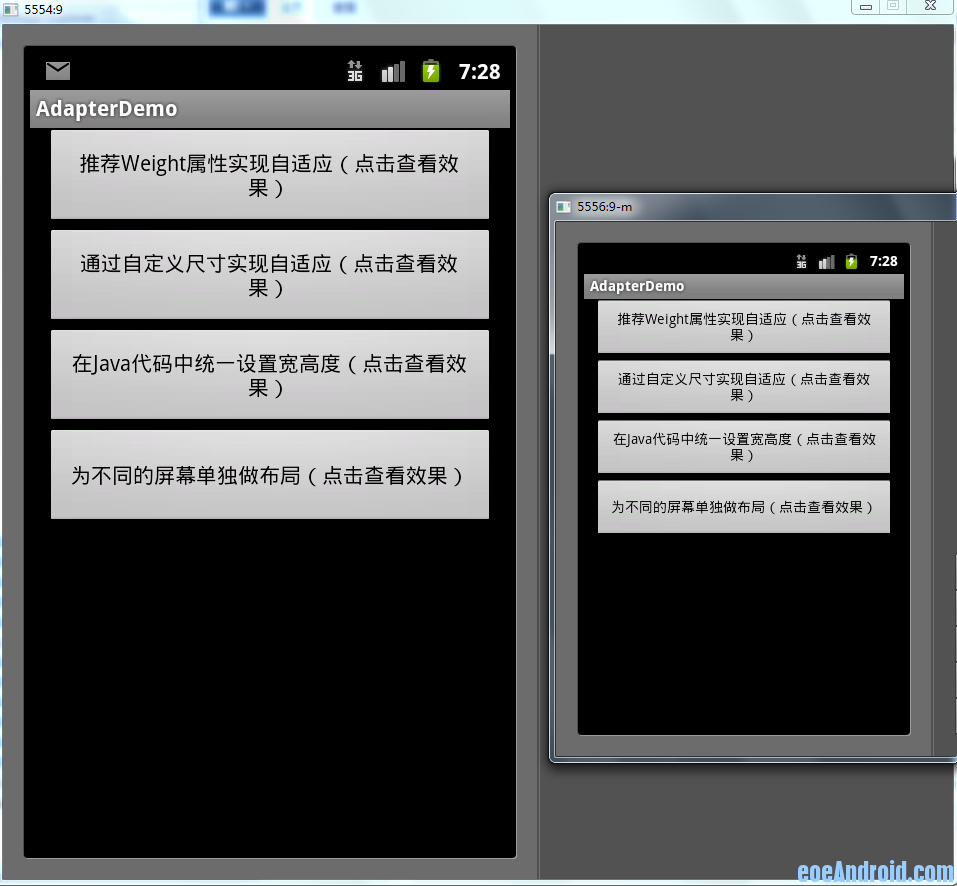 4種必須知道的Android屏幕自適應解決方案
4種必須知道的Android屏幕自適應解決方案
以下是Demo首頁的預覽圖 demo下載:http://www.eoeandroid.com/forum.php?mod=attachment&aid=
 Android 觸摸手勢(來自官方文檔)
Android 觸摸手勢(來自官方文檔)
Detecting Common Gestures,一般分為兩個階段:一: Gathering data about touch events.(收集數據)二: Inte
 ANDROID L——Material Design詳解(動畫篇)
ANDROID L——Material Design詳解(動畫篇)
Android L: Google已經確認Android L就是Android Lollipop(5